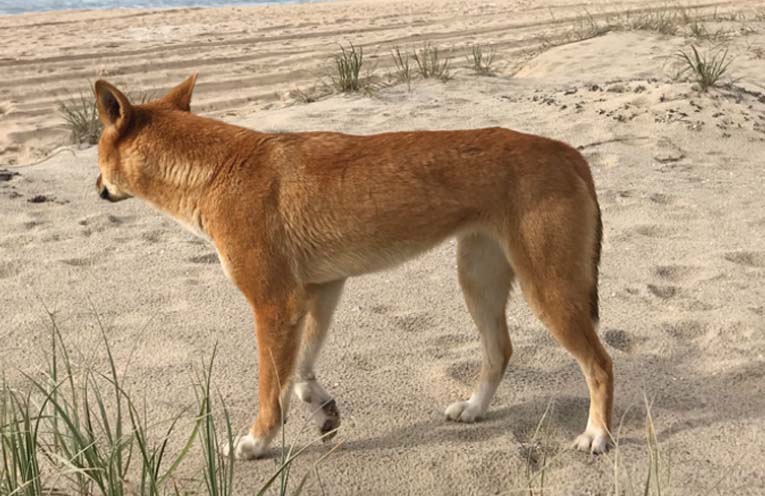
MIDCOAST Council is reminding the community, and visitors to the Hawks Nest area, to refrain from feeding or interacting with the dingoes these holidays.
When dingoes are fed by humans, they lose their natural shyness and fear of people.
 Advertise with News of The Area today.
Advertise with News of The Area today.It’s worth it for your business.
Message us.
Phone us – (02) 4981 8882.
Email us – media@newsofthearea.com.au
Learning to take food from people changes the way they forage and can lead to them to be reliant on handouts.
“Dingoes can quickly become highly territorial and exhibit increased aggression towards domestic pets and people,” said Gerard Tuckerman, MidCoast Council’s Manager Natural Systems.
“It’s imperative that we have the support of the community in practicing dingo-safe behaviours and sharing the message to not approach, encourage, leave food rubbish behind or feed the dingoes,” he added.
Hawks Nest/Tea Gardens and Seal Rocks are home to a wild dingo population.
Dingoes have environmental and Aboriginal cultural values and observing free-living dingoes can be a positive experience for many people.
“Council is committed to help keep our community dingo-safe,” said Gerard.
Council has developed a Dingo/Wild Dog Management Procedure for the Hawks Nest area that will help manage dingoes in residential areas and Council-managed spaces.
“It is based on a risk management model that has been successful on K’Gari (Fraser Island) in Queensland.
“Council will continue to work with the NSW National Parks and Wildlife Service, tourist park operators and the community.
“Research by dingo experts from the University of NSW and Taronga Conservation Society helps to inform Council’s dingo management programs and activities.
“Signs have been installed to encourage dingo-safe practices in the Tea Gardens and Hawks Nest area, and a compliance approach has been adopted.
“This approach incorporates education, warnings and finally, enforcement.
“Dingoes are expert hunters, but because they’re naturally lean, people think they’re undernourished,” Gerard said.
“They’re not meant to look like a domestic pet and they are highly capable of looking after themselves.
“Education is key.
“We need the community and visitors to the area to understand how important it is to respect these animals and never feed or encourage them.
“Ultimately, it’s what’s best for dingoes and best for people too,” added Gerard.
Council has an online reporting form for members of the public to share information about interactions and incidents with dingoes.
If a member of the public is concerned about the health of a dingo, please report the dingo to Council.
Mathew Bell, Senior Ecologist at MidCoast Council told News Of The Area, “The best means of reporting any concerns, including dingo welfare concerns, is via the online Council dingo reporting form, which is consistently monitored.
“Under no circumstances will dingoes ever be supplemented with artificial food and no community member should ever feed a dingo, regardless of their appearance or behaviour.”
For people and families wanting to see the dingos “in the wild”, Mathew recommends, “Enjoying the beautiful outdoor recreation spaces around Hawks Nest and Winda Woppa.
“At these recreation spaces families may have the chance to observe local dingoes.
“Children should always be supervised.
“Dingoes should never be approached, encouraged, played with, fed or allowed to access food or food wastes.”
According to the Myall Lakes Dingo Project (a collaboration of the University of NSW and Taronga Conservation Society Australia), there is a resident dingo population between Hawks Nest and Seal Rocks of about 30 adult dingoes.
In this area, there are about five stable packs with an average of three adults in each park, plus floating adults.
The population size seems quite stable.
Within Hawks Nest township, dingo presence is variable and there is expected to be between two and five adult dingoes.
Dingo home ranges tend to be very large, and so most adult dingoes range into and out of town.
By Marian SAMPSON
